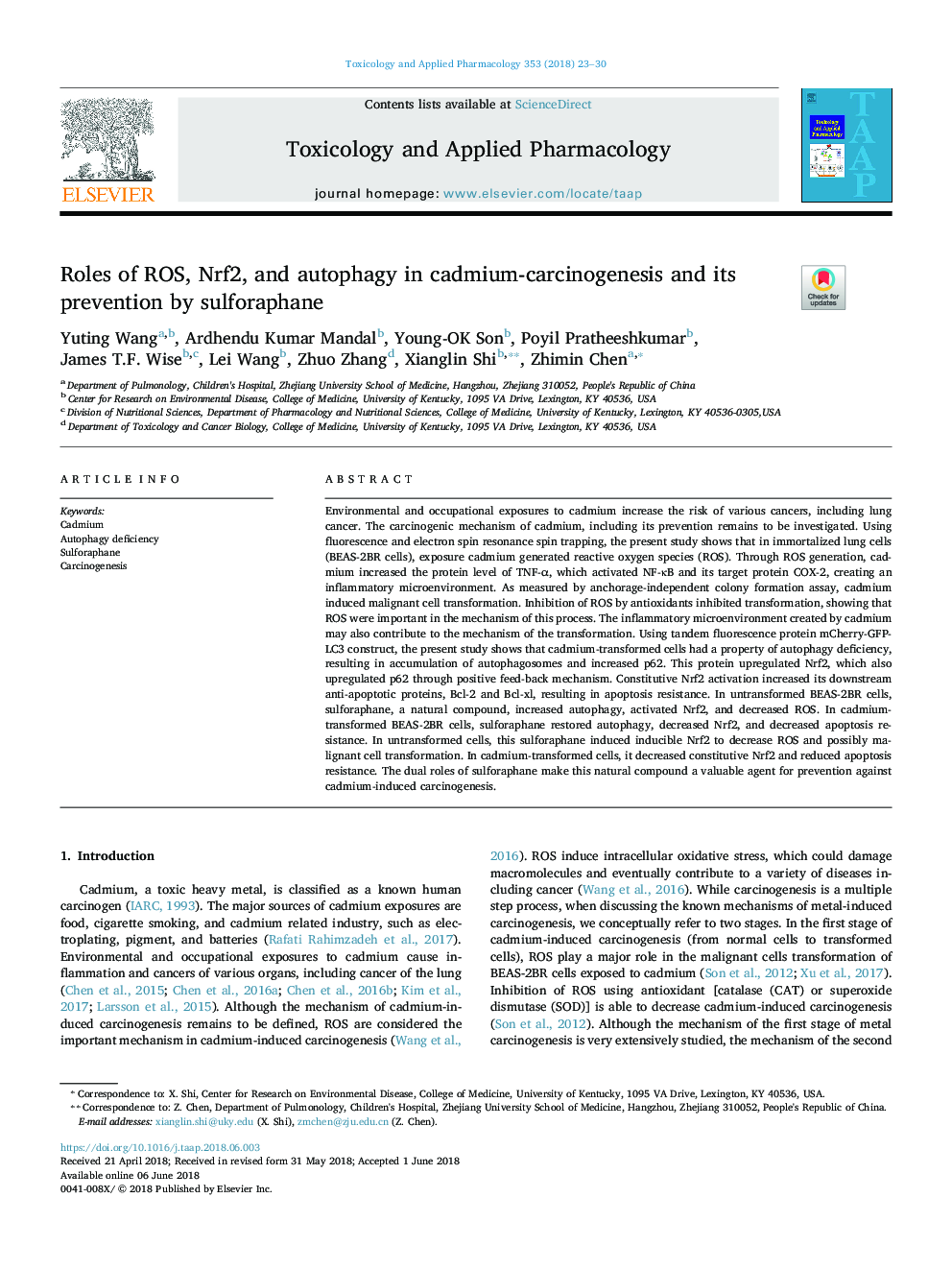| کد مقاله | کد نشریه | سال انتشار | مقاله انگلیسی | نسخه تمام متن |
|---|---|---|---|---|
| 8538326 | 1561109 | 2018 | 8 صفحه PDF | دانلود رایگان |
عنوان انگلیسی مقاله ISI
Roles of ROS, Nrf2, and autophagy in cadmium-carcinogenesis and its prevention by sulforaphane
دانلود مقاله + سفارش ترجمه
دانلود مقاله ISI انگلیسی
رایگان برای ایرانیان
موضوعات مرتبط
علوم زیستی و بیوفناوری
علوم محیط زیست
بهداشت، سم شناسی و جهش زایی
پیش نمایش صفحه اول مقاله

چکیده انگلیسی
Environmental and occupational exposures to cadmium increase the risk of various cancers, including lung cancer. The carcinogenic mechanism of cadmium, including its prevention remains to be investigated. Using fluorescence and electron spin resonance spin trapping, the present study shows that in immortalized lung cells (BEAS-2BR cells), exposure cadmium generated reactive oxygen species (ROS). Through ROS generation, cadmium increased the protein level of TNF-α, which activated NF-κB and its target protein COX-2, creating an inflammatory microenvironment. As measured by anchorage-independent colony formation assay, cadmium induced malignant cell transformation. Inhibition of ROS by antioxidants inhibited transformation, showing that ROS were important in the mechanism of this process. The inflammatory microenvironment created by cadmium may also contribute to the mechanism of the transformation. Using tandem fluorescence protein mCherry-GFP-LC3 construct, the present study shows that cadmium-transformed cells had a property of autophagy deficiency, resulting in accumulation of autophagosomes and increased p62. This protein upregulated Nrf2, which also upregulated p62 through positive feed-back mechanism. Constitutive Nrf2 activation increased its downstream anti-apoptotic proteins, Bcl-2 and Bcl-xl, resulting in apoptosis resistance. In untransformed BEAS-2BR cells, sulforaphane, a natural compound, increased autophagy, activated Nrf2, and decreased ROS. In cadmium-transformed BEAS-2BR cells, sulforaphane restored autophagy, decreased Nrf2, and decreased apoptosis resistance. In untransformed cells, this sulforaphane induced inducible Nrf2 to decrease ROS and possibly malignant cell transformation. In cadmium-transformed cells, it decreased constitutive Nrf2 and reduced apoptosis resistance. The dual roles of sulforaphane make this natural compound a valuable agent for prevention against cadmium-induced carcinogenesis.
ناشر
Database: Elsevier - ScienceDirect (ساینس دایرکت)
Journal: Toxicology and Applied Pharmacology - Volume 353, 15 August 2018, Pages 23-30
Journal: Toxicology and Applied Pharmacology - Volume 353, 15 August 2018, Pages 23-30
نویسندگان
Yuting Wang, Ardhendu Kumar Mandal, Young-OK Son, Poyil Pratheeshkumar, James T.F. Wise, Lei Wang, Zhuo Zhang, Xianglin Shi, Zhimin Chen,